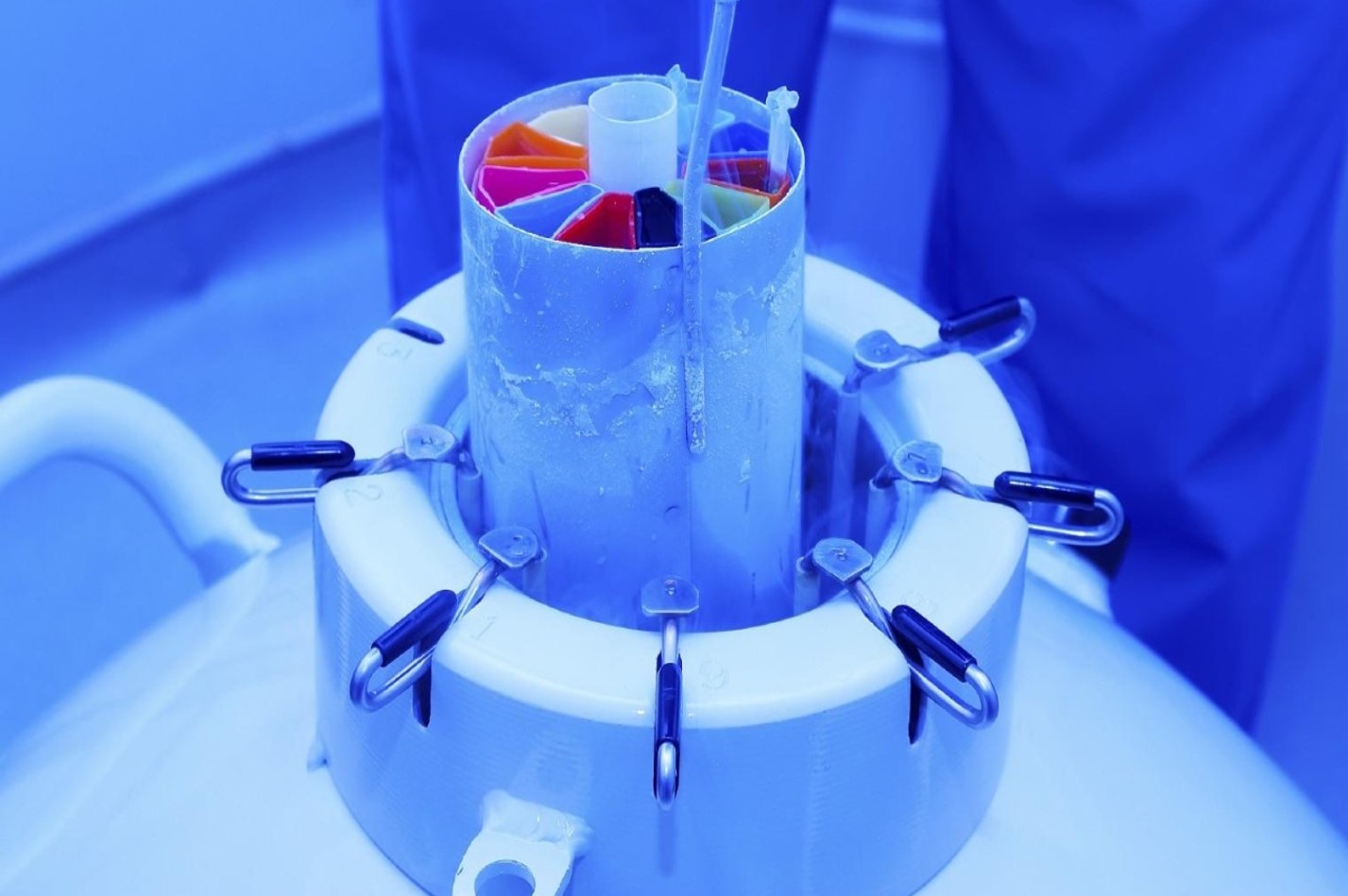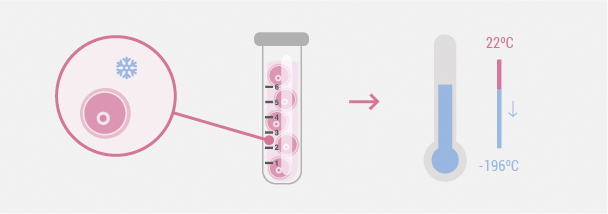Cryo-preservation is a process by which cells or tissue is frozen at very low temperatures, in this case it is frozen at -196 degrees Celsius, the temperature of liquid nitrogen.
Why should I Cryo-Preserve my semen?
The purpose of Cryo-preservating semen serves many purposes:
1. Low sperm count.
2. Low sperm motility.
3. Low count of normal-form sperm.
4. Testicular tumor.
5. Obstructive Azoospermia (Testicular biopsy).
6. Problems when obtaining a semen sample on a specific day for FIV.
7. Cryo-preseving before performing a vasectomy.
Low sperm count:
As explained in sperm training, a sperm sample in normal form has 20 million sperm per milliliter of semen. It is suggested to patients that undergo FIV that they have their sample frozen if before the aspiration they show less than 1 million per ml of semen. The sperm count of the semen sample will determine the amount of samples that the patient will be asked to provide for them to be frozen.
Low sperm motility.
Sperm motility is very important since motionless sperm does not give us a good sign and thus reducing the possibilities of it fertilizing the egg.
Low count of normal-form sperm.
There is a possibility that a sperm sample may show a high sperm count and a high motility rate, but if there is a low normal-form sperm count, the possibility will be very similar as to having low sperm count. For the embryologist it is important to select a good sperm form, for this will determine the quality of the embryo or that even fertilization is possible.
Testicular tumor.
Sadly a tumor can’t be predicted and many of these cases are treated with Chemotherapy which, in most cases, cause testicular damage and is virtually impossible that these can ever produce sperm again. It is suggested that prior to starting Chemotherapy, a patient should cryo-preserve a semen sample so in the future, if needed, he can procreate.

Obstructive Azoospermia (Testicular Biopsy)
Obstructive Azoospermia has to be previously diagnosed by an Urologist or Andrologist, and consists in that the testicular conducts through which sperm pass through are clogged and it is impossible for them to come through, leaving only semen fluid without any sperm. Sometimes this can be treated with drugs, but most of the times the only way of obtaining sperm is by a testicular biopsy.
Problems when obtaining semen sample on a specific day for FIV.
A semen sample must be obtained only at the Del Prado Fertility Center, when the couple comes in for the aspiration, the husband is asked to provide a semen sample. Sometimes patients get nervous, making it hard to provide the sample, but if a previous sample has been taken and frozen, it can be un-frozen and used.
Cryo-preservation before performing a vasectomy.
For personal reasons, a man may not want to procreate and decides to perform a vasectomy, if for any reason later he decides to change his mind, the procedure can be undone and the possibility of a pregnancy is very possible. But this will have to do with how long he had the vasectomy, for if several years have passed, his own body could have started to develop an antibody for sperm, that is, cells that kill sperm and having the procedure reversed might not allow him to procreate.
Cryopreservation of embryos:
When a couple goes through an In Vitro Fertilization (FIV), a woman is hormonally stimulated, why? Because a woman normally produces only one egg a month between the 13th and 15th day of having her menstrual period. Supposing that this person would undergo FIV, when the egg aspiration is done, only one egg will be obtained, so, with only one egg it is difficult to offer the patient a high probability of pregnancy, thus stimulation is necessary.
The stimulation treatment to the ovaries develops more ovules and more opportunity of fertilization.
Embryonic Cryopreservation is normally done after the transference, so that if embryos are left over, these can be cryo-preserved. Unfortunately, there is no way to know if after the transference the patient is pregnant or not, we can only know after 2 weeks of the transference when the pregnancy test is done in a clinical lab. Depending on the outcome, the couple could have more chances of procreating again with the cryo-preserved embryos. The rate of unfrozen embryos is slightly under the pregnancy rate with fresh embryos, this is because the best embryos are always chosen at the first transference and the others are cryo-preserved.
Thanks to the great studies that have been done, each day there are improvements on materials and means that are used for cryopreservation. This provides us with better and better embryonic survival after these are frozen.

